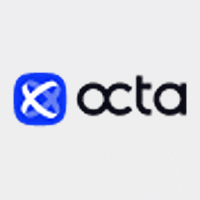This is the second part in our fundamental analysis article series on interest rate theories.
The simplest of the interest rate theories is the pure expectations theory which assumes that the term structure of an interest contract only depends on the shorter term segments for determining the pricing and interest rate of longer maturities. It assumes that yields at higher maturities (such as that of 5,10, or 30 year bonds), correspond exactly to future realized rates, and are compounded from the yields on shorter maturities. In other words, buying a ten year bond is equal to buying two five year bonds in succession; you’re as safe in a ten-year as in a five-year bond. At a cursory consideration, this should indeed be the case. For instance, with the government securities in the U.S. the only risk and rewards are born of the interest rate return on the lent amount. There is no significant risk of default associated in the transaction. Pure expectations theory also supposes that expectations of future rates coincide exactly with future rates realized in time. The market is a perfect predictor of future supply and demand. The pure expectations theory is in some ways similar to the efficient market hypothesis, in that it assumes a perfect market environment where expectations are just about the only determinant of future prices.
Yield calculation
From these basic assumptions, the pure expectations theory (PET) posits that future interest rates on longer maturities depend only on the rates of previous periods. To calculate the yields on a 3-year bond, for example, all that you need to do is to take the geometric mean of one-year yields on the first, second, and third years; there’s no external component independent of the yields that goes into the calculation of the yield curve. The term structure is substitutable. A contract on a three-year term serves exactly the same purpose as one on 3-months aside from the difference in interest rates, and as such, it is valued as if made of successive contracts combined to form the rate on the third year. You can either buy a two-year bond, or two one year bonds successively, the result will be the same with respect to return.
Related Articles
Limitations in the pure expectations theory
It is not hard to see that the pure expectations theory is similar to a pure intellectual exercise. It is rare to achieve the perfect results of this theory where today’s predicted rates over different maturities exactly match future realized spot rates. In addition, although the theory explains the simultaneous movement of rates, and also the relationship between the long and short terms well, it does not say anything about why the yield curve has an upward slope most of the time, that is, why longer term maturities command a higher interest rate in comparison to the short term. Since we noted that all maturities are equivalent in function, the slope is equally likely to be upwards as downwards (in tune with the boom-bust cycle, and rising and falling future rate expectations.), but this is not the case. Clearly, investors attach a higher risk to longer maturities due to some intrinsic factor not explained or predicted by the pure expectations theory.
To deal with this problem, the liquidity preference theory was developed which we’ll examine in the next chapter.
The Best Forex Demo Accounts
To master the forex markets it is important to practice your chosen strategy. This is where a forex demo account comes in: It allows you to practice your new strategy without risking any of your hard-won capital. Below we have picked out some of our favourite forex demo accounts to help you out.
| Broker | Features | Regulator | Platforms | Next Step | |
|---|---|---|---|---|---|
 Your capital is at risk
Founded: 2014 Your capital is at risk
Founded: 2014 |
|
FSPR | MT4 | ||
 Your capital is at risk
Founded: 2006 Your capital is at risk
Founded: 2006Europe* CFDs ar... |
|
ASIC, FSA, FSB, MiFID | MetaTrader4, Sirix, AvaOptions, AvaTrader, Mirror Trader | ||
 Between 74-89% of CFD traders lose
Founded: 2010 Between 74-89% of CFD traders lose
Founded: 2010Between 74-89 % of retail investor accounts lose money when trading CFDs |
|
ASIC, FCA | MetaTrader 4, MetaTrader 5, cTrader | ||
 Your capital is at risk
Founded: 2011 Your capital is at risk
Founded: 2011 |
|
CySEC, FSC, FSCA, MISA | MT4, MT5, OctaTrader | ||
 Your capital is at risk
Founded: 2009, 2015, 2017 Your capital is at risk
Founded: 2009, 2015, 2017 |
|
ASIC, CySEC, IFSC | MT4 Terminal, MT4 for Mac, Web Trader, iPhone/iPad Trader, Droid Trader, Mobile Trader, MT5 | ||
 Your capital is at risk
Founded: 2006 Your capital is at risk
Founded: 2006 |
|
CySEC, DFSA, FCA, FSB, SIA | MetaTrader4, MetaTrader5, cTrader, FxPro Edge (Beta) | ||
Next, part 3 >> Liquidity Preference Theory >>
Previous, part 1 << Understanding Interest Rates <<
Forextraders' Broker of the Month
BlackBull Markets is a reliable and well-respected trading platform that provides its customers with high-quality access to a wide range of asset groups. The broker is headquartered in New Zealand which explains why it has flown under the radar for a few years but it is a great broker that is now building a global following. The BlackBull Markets site is intuitive and easy to use, making it an ideal choice for beginners.
